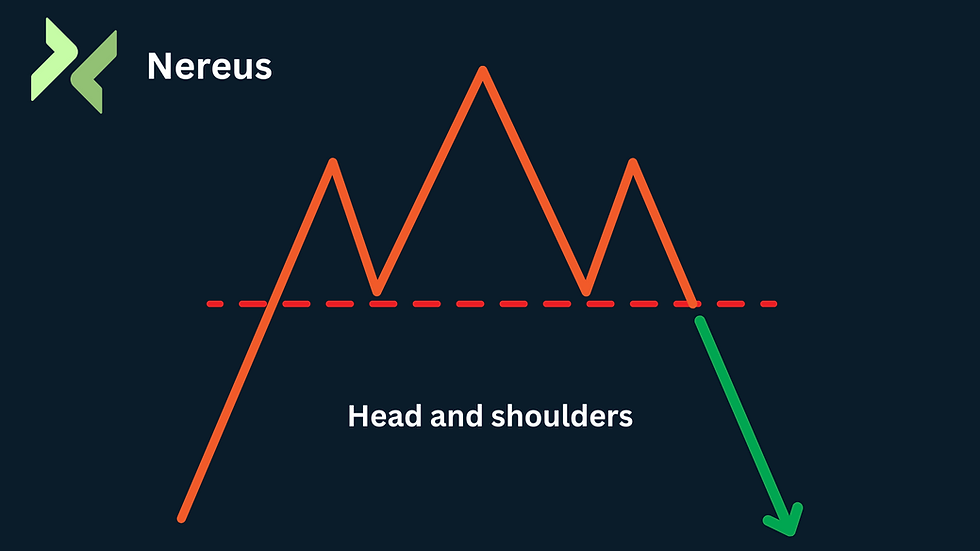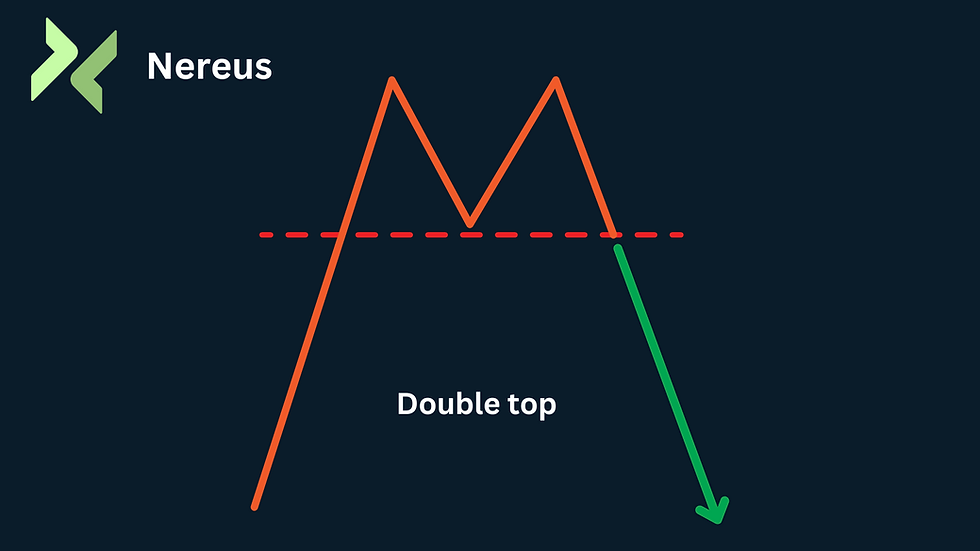Chart Patterns Trading: Mastering Technical Analysis for Profit
- porta48
- Aug 26, 2024
- 4 min read

Chart patterns trading can feel like trying to read tea leaves. You see all these lines zigging and zagging. You hear people throwing around terms like "head and shoulders" and "double bottoms." It can feel overwhelming, especially when everyone else seems to know exactly what they're talking about (even if they don’t). But here’s the reality: chart patterns trading isn’t about predicting the future. It’s about understanding the past to identify potential trading opportunities.
Chart patterns are like footprints in the sand, showing you where the market has been and hinting at where it might be going. By learning to recognize these patterns, you can gain a valuable edge in the chaotic world of trading with candlestick patterns.
Table of Contents:
The Power of Recognizing Patterns
The stock market might feel random. However, experienced traders know that history tends to repeat itself. This is true even in the seemingly unpredictable world of finance. Chart patterns trading is based on the idea that certain patterns in price movement repeat consistently.
These patterns can be used to forecast potential price direction. Imagine a surfer waiting for the perfect wave. They don't just paddle out randomly; they study the ocean's rhythm, watching for telltale signs of an approaching swell. Traders using chart patterns are doing the same thing. They are looking for patterns in price action to make smarter trading decisions.
The Building Blocks: Support and Resistance Levels
Before we get into specific patterns, it’s vital to grasp support and resistance levels. These are the fundamental building blocks of technical analysis. Learning these concepts can improve your technical trading.
Support Levels
Support is like a safety net where an asset’s price halts its downward trend and rebounds upward. This occurs because more buyers enter the market at that level, outweighing the sellers. Think of it as a floor beneath a falling object.
Resistance Levels
Resistance works in reverse—acting as a ceiling. It's where an asset’s price encounters consistent selling pressure. This hinders further price appreciation. The stock attempts to move past this level, but like a balloon hitting the ceiling, it runs out of steam and drifts back down.
Understanding these levels is key. Many chart patterns form around these crucial junctures. Breakouts from these levels can signal significant price moves. They are also important for drawing trendlines.
Dissecting the Different Chart Patterns
Chart patterns generally fall into three categories: continuation patterns, reversal patterns, and bilateral patterns. Let’s break them down:
1. Continuation Patterns: Riding the Trend Wave
As their name suggests, continuation patterns hint that a prevailing trend is likely to continue. This will happen after a brief pause or consolidation phase. These pauses represent periods of uncertainty. During these periods, neither buyers nor sellers have a clear advantage.
Continuation patterns often emerge during a trend when the market needs to “catch its breath”. After this, the asset will continue its existing path.
Some common continuation patterns include:
Flags: These look exactly like they sound: a rectangular price channel (the flag) following a sharp directional move (the flagpole).
Pennants: Resembling a symmetrical triangle, pennants signify a brief pause in a strong trend, often marked by declining trading volume before a breakout.

2. Reversal Patterns: Spotting a Change in Tide
Think of reversal patterns as warning signals flashing a potential trend change. Imagine driving down a road when you encounter a "dead end" sign; you have to turn around. When these patterns appear, traders pay close attention. They provide an opportunity to enter a trade in the opposite direction of the previous move. However, it’s important to remember these are just potential warnings and not guarantees.
Examples include:
Head and Shoulders: This popular bearish reversal pattern is named for its appearance. It forms after an uptrend and signals a potential trend reversal to the downside. The left shoulder, the head (the highest point), and the right shoulder all form around the neckline, and a break below that neckline suggests further decline.

Double Tops and Bottoms: Resembling the letters 'M' and 'W' respectively, these patterns suggest weakening momentum. A double top forms after an uptrend. It occurs when the price fails to break above a resistance level twice, potentially signaling a reversal to the downside. A double bottom works inversely after a downtrend. The price struggles to break through a support level twice, hinting at a potential upward shift.


3. Bilateral Patterns: Embracing Uncertainty
Bilateral patterns are like those tricky “choose your own adventure” books. They are characterized by consolidation periods when prices move within a defined range. They suggest that the market could break out in either direction. It's crucial to watch for the breakout and its subsequent volume for confirmation of the potential new trend.
A key example is:
Symmetrical Triangle: Characterized by converging trend lines forming a triangle shape, the symmetrical triangle represents a period of market indecision. As the price oscillates in a narrowing range, volatility contracts.

Chart Patterns Trading: Art or Science?
While the allure of identifying predictable patterns is strong, remember: chart patterns trading isn't an exact science. It's more of an art form—combining technical analysis, risk management, and trading psychology. Be sure to keep your emotions in check as you implement your trading plan.
FAQs About Chart Patterns Trading
How Accurate Are Chart Patterns?
Chart patterns, while potentially valuable tools, are not foolproof predictors of future market movements. Think of them more like indicators rather than guarantees.
Can Chart Patterns be Used for All Trading Styles?
Whether you are a day trader, swing trader, or long-term investor, chart patterns offer insights for diverse trading styles. Day trading is especially reliant on technical analysis.
Conclusion
Learning chart patterns trading requires a commitment to ongoing education and practical experience. It's like learning a new language, but instead of words, you’re deciphering the visual grammar of the market. As with any skill, patience and perseverance will serve you well in this rewarding journey.






Comments